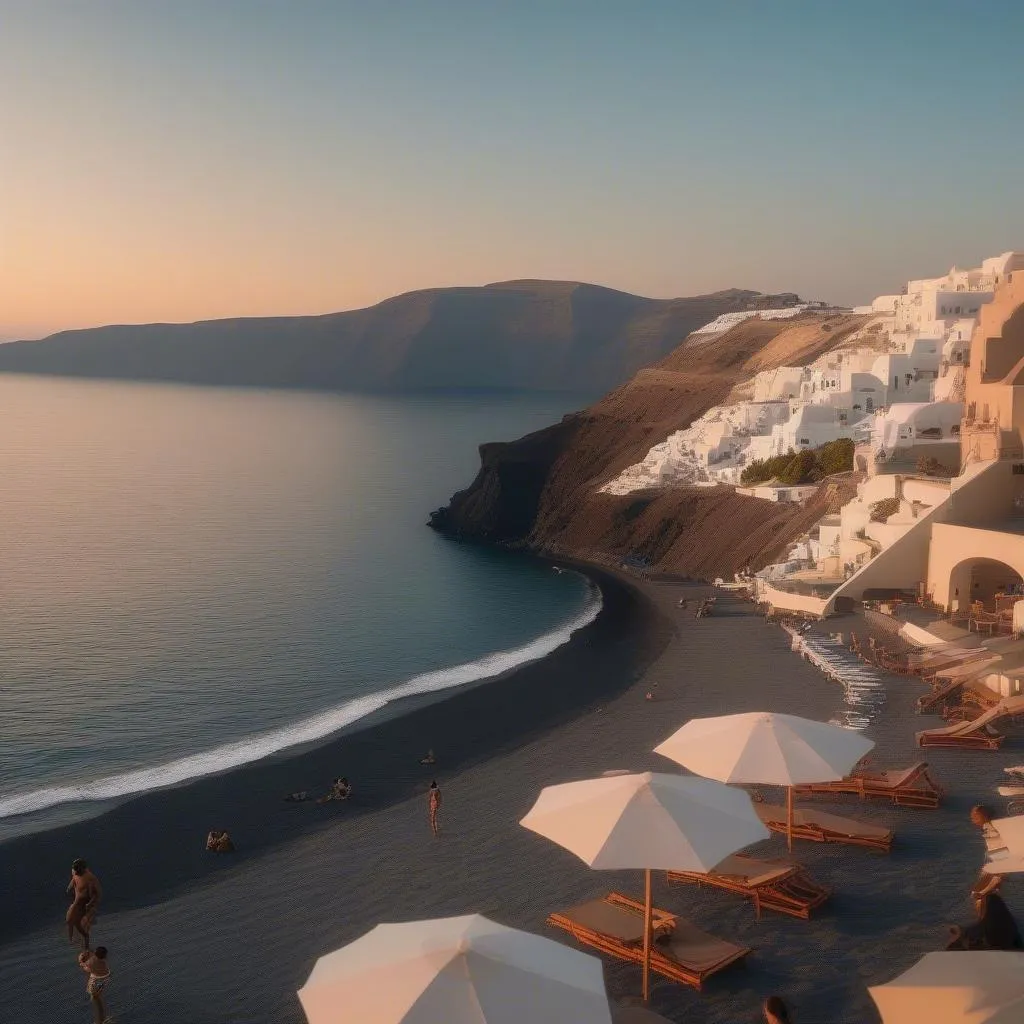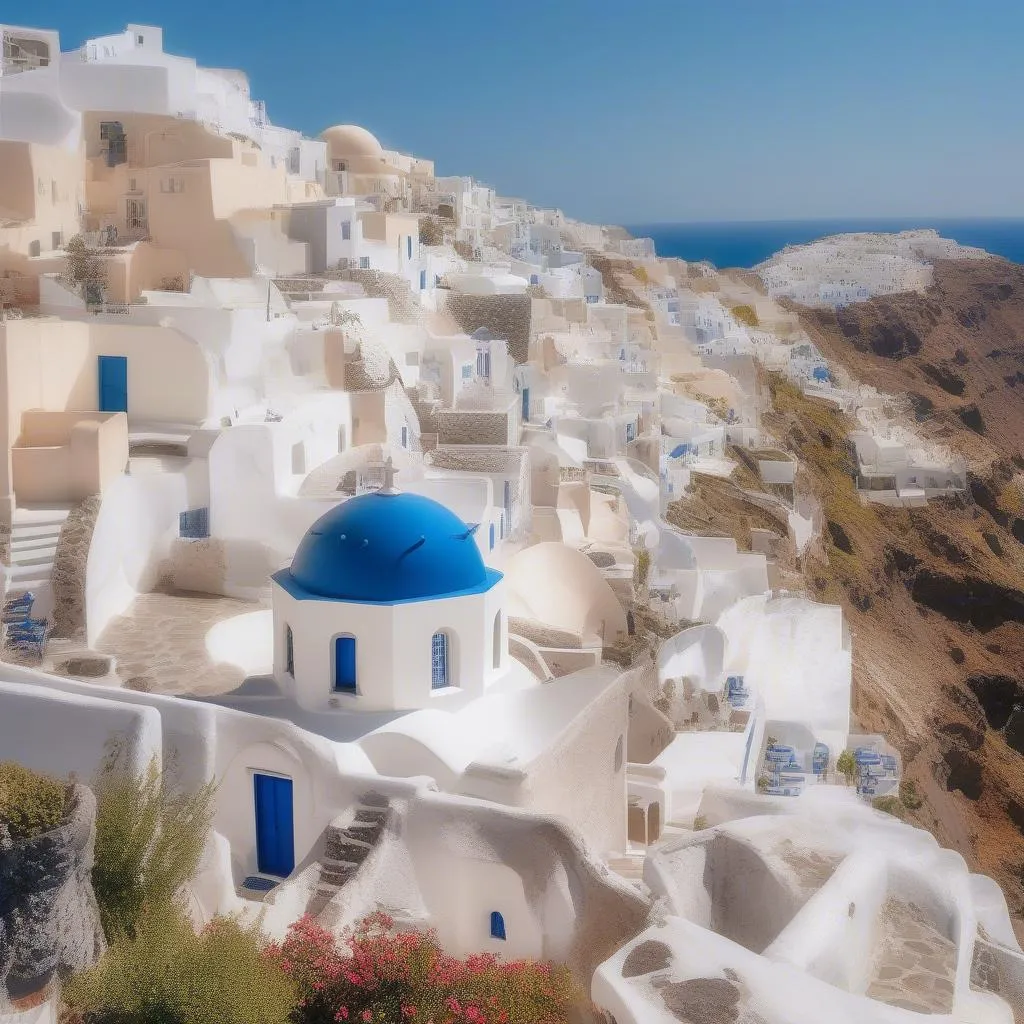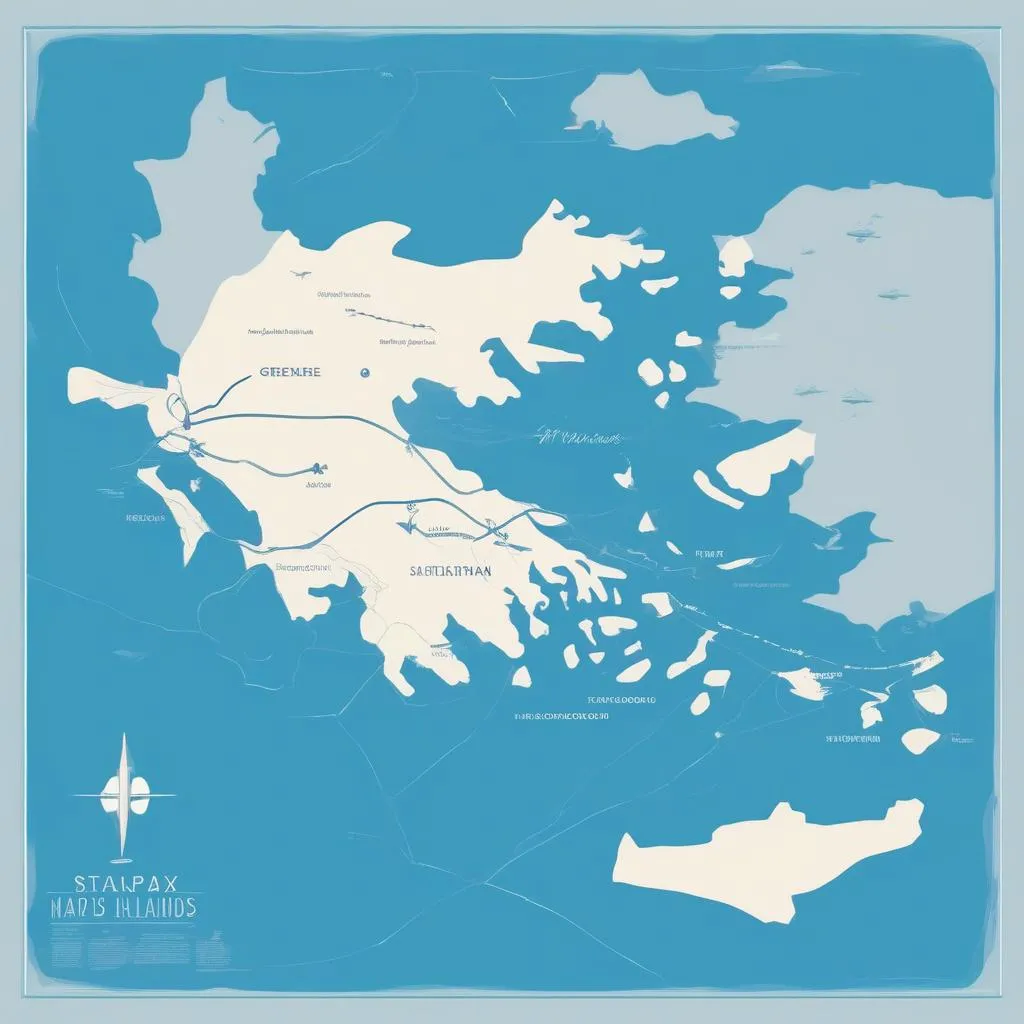“Santorini is calling, but when should you answer?” I hear this question all the time from travelers eager to experience the magic of this Greek island. It’s a great question, as the “best” time to visit Santorini really depends on what you’re looking for in your Greek adventure.
Do you crave sunshine and swimming, or are you more interested in exploring ancient ruins without the summer crowds? Are you on a budget, or is money no object? Let’s dive into the best times to visit Santorini based on your travel priorities!
Santorini’s Seasons: A Quick Overview
Santorini, like most of Greece, enjoys a Mediterranean climate with hot, dry summers and mild, wetter winters.
- High Season (June – August): Think blazing sunshine, azure waters perfect for swimming, and crowds to match.
- Shoulder Season (April – May & September – October): Pleasant weather, fewer crowds, and often better deals on flights and accommodation.
- Low Season (November – March): Tranquil, with the island practically to yourself, but some businesses may be closed.
Best Time for…
…Beach Bums and Sun Seekers
For the quintessential Santorini experience of lounging on volcanic black sand beaches and swimming in the Aegean Sea, aim for July and August. Just be prepared for plenty of company! Picture yourself sipping cocktails at a beachfront taverna in Perissa or Kamari, the sun setting over the caldera… pure bliss!
 Santorini Beach Sunset
Santorini Beach Sunset
…History Buffs and Culture Vultures
Interested in exploring the Akrotiri archaeological site or wandering the charming streets of Oia without battling hordes of tourists? May, early June, September, or October are ideal. The weather is still pleasant, and you’ll have more space to breathe as you take in the island’s rich history.
…Budget Travelers
Santorini can be a pricey destination, but you can snag better deals on flights and accommodation during the shoulder seasons (April-May & September-October). Plus, you’ll encounter fewer fellow tourists vying for those iconic caldera views.
 Oia Village Santorini
Oia Village Santorini
…Honeymooners Seeking Romance
Santorini practically invented romance! While you can’t go wrong with a visit anytime, May, June, September, and October offer the perfect blend of pleasant weather, stunning sunsets, and a more intimate atmosphere. Imagine strolling hand-in-hand with your loved one through the quiet streets of Imerovigli as the sun dips below the horizon… utterly magical!
Planning Your Trip to Santorini
No matter when you decide to visit Santorini, a little planning goes a long way.
- Booking in Advance: Santorini is a popular destination, so booking flights and accommodation well in advance is crucial, especially if traveling during high season.
- Island Hopping: Consider combining your Santorini trip with other Greek islands like Mykonos or Crete for a diverse Greek adventure. Check out TRAVELCAR.edu.vn for more information on planning your Greek island hopping itinerary.
- Respecting Local Customs: Remember to dress respectfully when visiting churches and monasteries.
 Greek Islands Map
Greek Islands Map
FAQs About Visiting Santorini
What is the currency in Santorini?
The currency used in Santorini, and throughout Greece, is the Euro (€).
Do I need a visa to visit Santorini?
Greece is part of the Schengen Area, so visa requirements depend on your nationality. Citizens of many countries can enter Greece for up to 90 days without a visa. However, it’s always best to check the specific visa requirements for your country before you travel.
What language is spoken in Santorini?
The official language is Greek, but English is widely spoken, especially in tourist areas.
What are some must-try foods in Santorini?
Prepare your taste buds for delicious Greek cuisine! Be sure to sample local specialties like fava (split pea puree), tomato keftedes (tomato fritters), and of course, fresh seafood.
A Santorini Story: Finding My Inner Peace
I’ll never forget my first trip to Santorini. I arrived in Oia just as the sun began its descent, painting the sky in hues of orange, pink, and purple. The beauty of the caldera, the white-washed houses clinging to the cliffs, and the vastness of the Aegean Sea took my breath away.
As I wandered through the narrow streets, the scent of bougainvillea filling the air, I felt a sense of peace wash over me. It was as if the island itself had a calming energy. I sat at a small cafe overlooking the caldera, sipping strong Greek coffee and watching the sunset. In that moment, all my worries seemed to melt away.
Santorini is more than just a beautiful island; it’s an experience that stays with you long after you’ve left.

